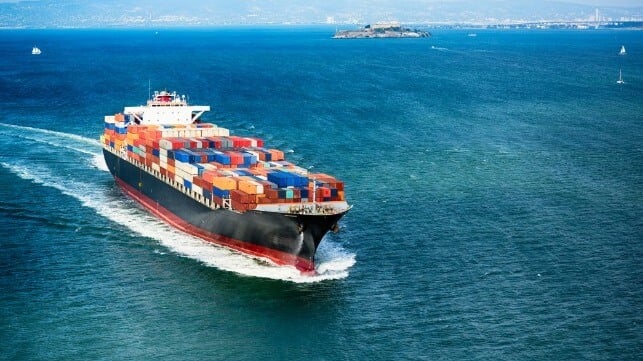Late Arriving Containership Delays Reach Highest Levels Since Pandemic

The average delay for containerships behind schedule has continued to increase in 2024 rising to the highest levels except during the peak of the pandemic and surge in container volumes. Sea-Intelligence is out with its monthly look at the average performance of the container shipping carriers across 34 different trade lanes highlighting the industry remains broadly impacted by the disruptions of 2024.
“While schedule reliability in 2024 has stabilized within the 50 to 55 percent range, it’s been on a slight downward trend since the May peak,” commented Alan Murphy, CEO of Sea-Intelligence. He however notes that “The low levels of volatility in schedule reliability in 2024 do give shippers a relatively good idea of what to expect month over month.”
Overall, the industry’s schedule reliability slipped a further 1.2 percentage points in September to 51.4 percent. It is the bottom of the range for 2024 and the lowest level the industry has seen in 24 months. From a dismal level of just one in three ships on schedule in 2021, the industry surpassed the 50 percent mark in October 2022 and was able to get as high as 64 percent in mid-2023. The declines resumed in December 2023 as the Houthis began to interrupt containership schedules through the Red Sea.
The current performance compares with 2019 when before the pandemic, the surge in volumes, and now the Red Sea diversions, containerships were reaching 80 percent schedule reliability. Maersk and Hapag-Lloyd have set an ambitious target of reaching 90 percent schedule reliability on key routes once they launch the Gemini Cooperation in 2025.
Maersk remains at the top of the industry with the best schedule reliability in September 2024 and one of only four carriers among the top 13 that were able to improve performance between August and September. However, Maersk is at just 55.5 percent down from 70 percent a year ago. Zim, PIL, and Wan Hai were the other carriers that were able to improve performance month over month.
All the top carriers are showing a significant decline year over year. From an average of 60 percent in September 2023, the largest carriers are down 13 percentage points to an average of 47 percent in September 2024. Three carriers (MSC, PIL, and Wan Hai) are each down over 20 percentage points year-over-year calculates Sea-Intelligence. The average decline year-over-year is 13 percentage points with a 2.5 percent point average decline in September 2024 versus the prior month.
While schedule reliability has been in a narrow range for 2024, Sea-Intelligence highlights that the September 2024 average delay is “the third-highest figure for the month, only surpassed by pandemic highs of 2021-2022.”
The average delay in September was up a further 0.21 days reports Sea-Intelligence. They calculate that the average delay for late vessel arrivals is now 5.67 days. The average for 2024 is up half a day from the 2023 average. Before the rerouting began, vessels had clawed the delay back to below five days for late arrivals.
The most consistent level of port congestion remains in Asia reports Linerlytica. In addition to the Chinese ports, Singapore, Hong Kong, and Korea, Linerlytica however shows increased levels at Savannah and in Northern Europe’s large container ports on its October 31 snapshot.
With the diversions around Africa and winter weather challenges off the South Africa, ports and carriers highlighted problems with vessel bunching at ports. This was creating the congestion spikes at individual ports which further added to the delays.
Maersk warned the industry last week that it expects the disruptions coming from the Red Sea rerouting to continue well in 2025. The Houthis over the weekend vowed to continue their attacks while the leader of the group reported they have targeted over 200 vessels in the past year.
